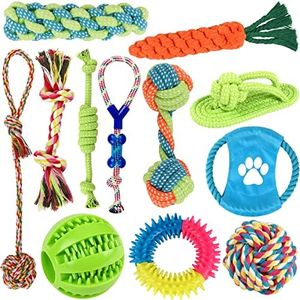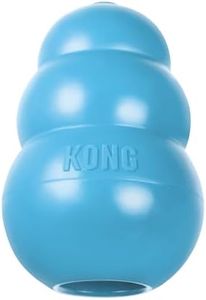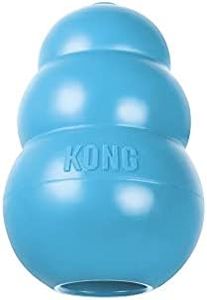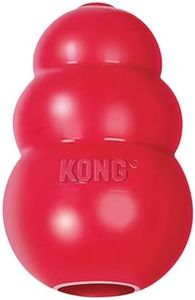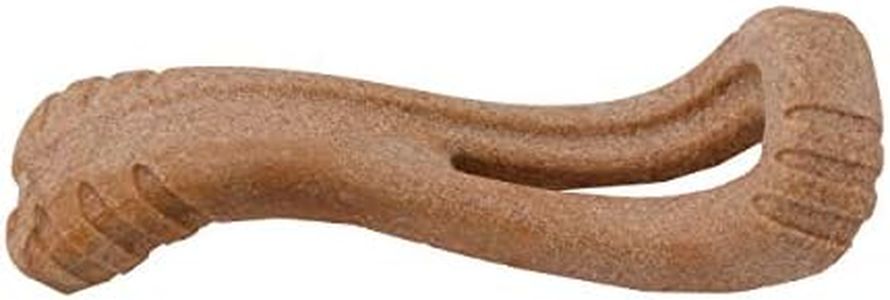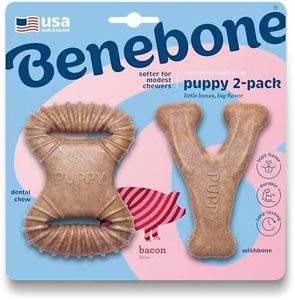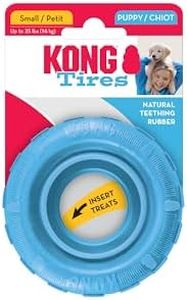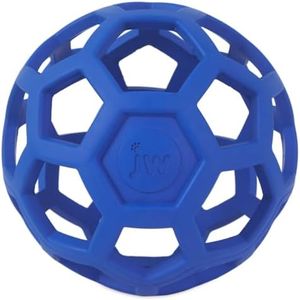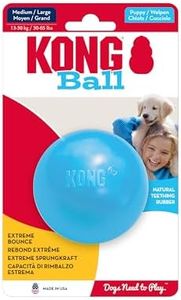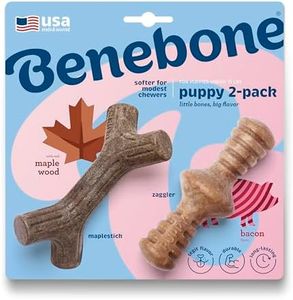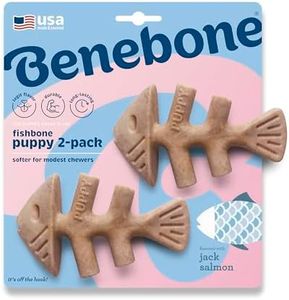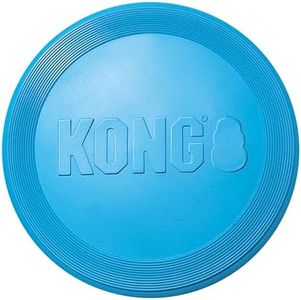We Use CookiesWe use cookies to enhance the security, performance,
functionality and for analytical and promotional activities. By continuing to browse this site you
are agreeing to our privacy policy
10 Best Puppy Teething Toys
From leading brands and best sellers available on the web.Buying Guide for the Best Puppy Teething Toys
Choosing the right puppy teething toy is important for both your pet's comfort and safety. Puppies, like babies, go through a teething phase where their gums are sore and they want to chew on things. Picking a suitable toy helps them cope with discomfort and prevents them from chewing on items they shouldn't. When selecting teething toys, focus on materials, durability, safety, size, texture, and cleaning ease as the main factors, always considering your puppy's breed, size, and chewing habits.MaterialMaterial refers to what the toy is made of, such as rubber, nylon, or fabric. This is important because it affects both safety and durability. Softer materials are gentle on a puppy’s gums, while harder materials can withstand more aggressive chewers. For very young or gentle puppies, look for soft, flexible materials that bend easily and can be soothing. For stronger chewers, a firmer rubber may be better. Always avoid materials that could splinter or break easily, as your puppy could swallow small pieces.
DurabilityDurability relates to how well the toy stands up to repeated chewing. If a toy breaks apart quickly, it could be unsafe and wasteful. Lightweight, thin toys are good for mild chewers, while heavyweight, tough toys are for puppies that chew with a lot of force. Consider how destructive your puppy tends to be with toys and pick something sturdy enough to last but not so hard it could damage their teeth.
SafetySafety focuses on the design features that prevent choking or ingesting parts of the toy. Safe teething toys are made from non-toxic materials, have securely attached pieces, and are sized so your puppy can’t swallow them. Avoid toys with small, detachable pieces or loose threads. Always look for toys labeled as puppy-safe, and use your judgment about whether a toy seems suitable for your pup’s size and play style.
SizeSize means how big or small the toy is relative to your puppy’s mouth. This is crucial because too small toys can be a choking hazard, while too large toys might be difficult or unappealing for your puppy. For tiny pups, choose smaller toys they can easily hold, but never so small they can just swallow them. For larger breeds, go up in size to match their growing mouths.
TextureTexture is about the surface feel of the toy—smooth, bumpy, ridged, or knobby. Different textures can provide different sensations for sore gums and make chewing more interesting. Puppies with sore gums might find soft, bumpy textures soothing, while more adventurous chewers may enjoy a mix of surfaces. If your puppy seems bored with one toy, switching up the texture can help keep them engaged.
Ease of CleaningEase of cleaning refers to how simple it is to keep the toy clean and hygienic. Puppies put toys in their mouths, so regular washing is necessary to prevent bacteria or dirt build-up. Toys that can go in the dishwasher or be washed with soap and water are the easiest to maintain. If your puppy will use the toy outside or tends to get things dirty quickly, look for toys specifically labeled as easy to clean.
